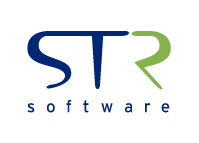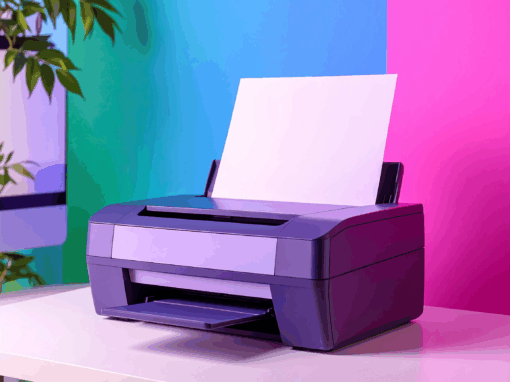Case Study Snapshot
Many organizations using Oracle EBS encounter significant database strain, high maintenance costs, and poor performance due to file attachments stored as BLOBs within the database, a system not designed for document management. By implementing AventX A2A Attachment Migration solution, a global steel producer automatically migrated file attachments from the Oracle database to external storage like SharePoint Online, replacing them with Web Page (URL/Link) Attachments. This process lead to a dramatic reduction in database size, freeing up hundreds of gigabytes and significantly improving database performance.
The Results
%
reduction in the database space consumed
%
reduction in the total files stored in the database
improved Oracle EBS system performance
improved user experience
for accessing and managing files
The Challenge
Database Strain from Oracle EBS File Attachments
Organizations leveraging Oracle EBS frequently encounter significant challenges in managing file attachments stored directly within the database. While Oracle’s Document Catalog and “Paperclip” features offer users a convenient way to quickly attach documents to Oracle Records, this practice, once considered standard, treats each file individually and leads to files being stored as binary objects (BLOBs) within the Oracle database. Oracle EBS was not designed to function as a document management system, and storing increasing volumes of files in this manner consumes expensive database resources.
Over time, accumulating attachments – such as purchase orders, invoices, receipts, equipment manuals, safety checklists, and project documentation – can cause substantial database growth. This excessive database size leads to High Maintenance Costs, including additional hardware, software, licensing, and compliance efforts, and increased time spent by Database Administrators (DBAs) on backups, audits, and upgrades. More critically, it often results in Poor Performance, slowing down access for users who expect quick retrieval of information and files.
This strain was particularly evident in core processes like Purchasing and Requisitioning for our client — a global integrated steel producer with a large US conversion mill.
Addressing this issue through manual methods, such as retraining users to save and link files externally, or implementing file size and type restrictions, presents significant hurdles in user adoption, ongoing compliance, and maintaining workflow efficiency.
Once a best practice and now a strain on the database, Oracle File Attachments are increasingly consuming expensive database resources.
The Solution
Implementing AventX A2A Attachment Migration
To alleviate the burden on their Oracle database and improve efficiency, our client implemented the AventX A2A Attachment Migration solution. AventX A2A is designed to streamline Oracle EBS file management by enabling the seamless synchronization of external attachments and optimizing database storage. The software works with any Oracle EBS Module, including Projects, Contracts, Order Confirmations, Invoices, General Ledger, POs, and Work Orders. It facilitates the migration of files to and from external repositories such as SharePoint Online, Local, or Network Storage.
The core functionality of AventX A2A involves automatically migrating File Attachments from the Oracle EBS database to a configured external storage location like a SharePoint Document Library. This process can be scheduled to evaluate invoices or purchase orders based on configurable criteria, exporting attachments from the Oracle database. After copying the document to the external repository, AventX A2A automatically replaces the original File Attachment in the Oracle EBS record with a Web Page (URL/Link) Attachment that points to the file’s new location. This action frees up valuable database space while ensuring users can still access the documents directly from within Oracle EBS by clicking on the link. This aligns with the strategic approach of using Oracle EBS for its intended database functions and leveraging a system like SharePoint Online, which is designed for file management.
AventX for Oracle Cloud Maintenance navigates the challenges of adopting Oracle Maintenance Cloud by simplifying the process of printing work orders from an Oracle SaaS pod.
The Results
Dramatic Database Reduction
By implementing AventX A2A, our customer dramatically reduced the number and size of attachments stored directly in their Oracle database for key entities. The solution effectively migrated attachments out of the database, significantly impacting storage consumption:
| Oracle Entity | Before AventX | After AventX |
| PO_Header | 285,466 files 533.18 GB | 1,665 files 0.525 GB |
| PO_Lines | 150,001 files 28.37 GB | 5,251 files 0.0932 GB |
| REQ_Header | 54,792 files 10.11 GB | 60 files 0.015 GB |
| Summary | Before AventX | After AventX | Reduction |
| Total Files | 490,259 | 6,976 | 📉 483,283 |
| Total GB | 577.66 GB | 1.472 GB | 📉 570.188 GB |
These figures demonstrate the significant database size reduction achieved by implementing AventX A2A. Migrating hundreds of thousands of attachments and hundreds of gigabytes of data from the Oracle database frees up precious BLOB storage space quickly and permanently.
AventX A2A reduced Oracle BLOB Storage:
98.58% Reduction in Files Stored
99.74% Reduction in Database Space Used
Beyond Size
Additional Benefits Realized
The benefits extend beyond just reclaiming database space. By migrating attachments to external storage, the client also realized several operational improvements highlighted in the sources:
- Improved Database Performance: Reducing the overall database size directly improved the speed and performance of the Oracle EBS system.
- Enhanced User Experience: Storing documents in a system designed for file management provided a more intuitive, user-friendly, and searchable experience for accessing archived files. Documents stored externally can be updated in real-time without reattaching them to Oracle EBS. Furthermore, AventX A2A streamlines the process for users, allowing them to save documents to SharePoint, which are then automatically linked to the correct Oracle EBS Record as a Web Page Attachment, reducing manual steps.
- Secure and Streamlined Access Management: AventX A2A integrates Oracle EBS user management with Microsoft Entra ID Groups and SharePoint Document Libraries, ensuring secure access to critical files. This integration automates the tedious task of adding and removing users from SharePoint Groups based on Oracle EBS user access, ensuring access is always up-to-date and secure without manual synchronization efforts.
- Optimized Archiving and Compliance: SharePoint Document Libraries are among the best options for long-term archive storage for compliance. Migrating files to this platform helps organizations meet compliance standards more easily.
In conclusion, the global steel producer’s implementation of AventX A2A demonstrates the power of migrating file attachments from the Oracle EBS database to external storage solutions. The reported numbers for PO_Headers, PO_Lines, and REQ_Headers showcase the significant impact on database size and file count. Beyond this critical reduction, the solution provides benefits related to improved system performance, enhanced user experience, better compliance, strengthened security through automated user management, and streamlined document handling processes, enabling them to use Oracle EBS as the database it was designed to be.



![Rollup of Product Updates [Summer 2025; v25.3]](https://www.strsoftware.com/wp-content/uploads/2023/02/Feature_Image_ProductUpdate_Wave-510x382.png)

